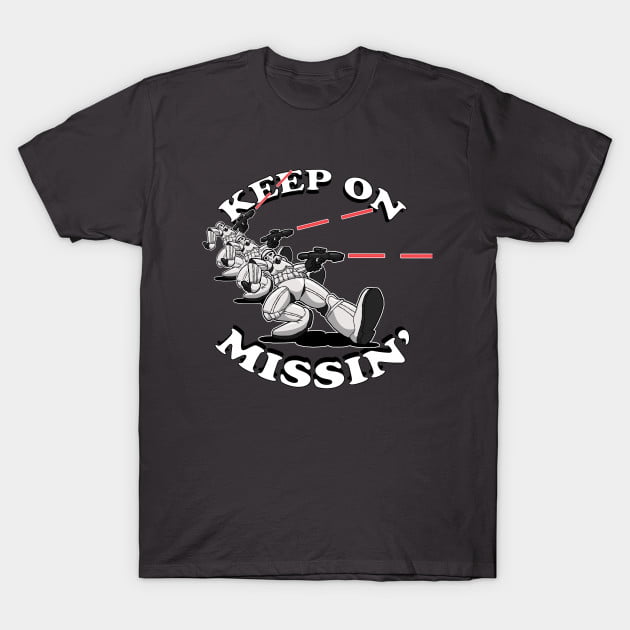April 2018 Wrapup
What happened in April?
Blog news, we had a daily blog post. My backlog dipped low but I brought it back up again. We had our regular segments – Weekly MTG, Game Pile and Story Pile. Of my April articles I’m most proud of my write-up of Planescape Torment, my hypothesis on Bright, and my guide on writing a Light Novel. The Light Novel jam has another month so if you want to get onto it, hey, you can do that!
We had another shirt design, or rather, we had four.

These four Harry Potter designs, Basic, Extra, Boring and Evil are inspired from a multimedia franchise that I’m pretty sure has no legitimate reason to actually sue me.
I launched a game, again, Downspout this time. Here at Invincible Ink, and here at DriveThruCards. It’s like PVP Pipe-Dream!
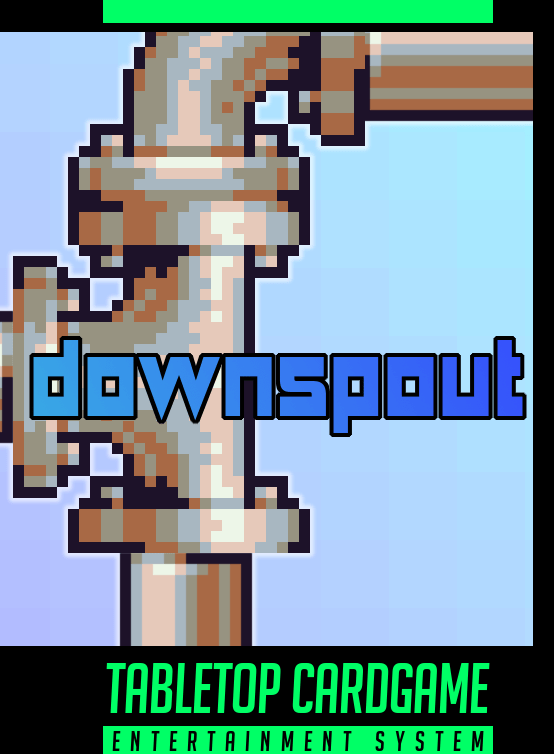
My video project got snarled up a bit, so I didn’t make the two videos I was hoping to make – a history of the Ur-Quan and an episode of Making Fun – but instead, I put together a final capstone video of me playing The Swindle. I’m thinking I’ll move on to playing Dishonored 2 again next, since I can’t get Fox readily to commentate on it.
On a life side of things, classes and work finally got sorted out to the point I had a stable work situation. I had a birthday, I got some nice new knives, and I got to grade some of my students’ cool ideas for making games. I read a bunch of books for my degree and I wrote a bunch about them too. I also wrote about my PhD thesis idea, here.
MOVED POST 1
This post was deemed important to my PhD and has been moved to my academic blog. If you don’t know where that is, that’s okay! Or you can contact me to ask me where to find it.
Otherwise, don’t worry about it.
Story Pile: Rounders
I normally try to set April aside to talk indulgently about stuff I really like, because it’s the month with my birthday in it. You know, a theme is as good as any other theme. I haven’t really done that this month, like I didn’t dig down to make an ostensible show of picking out five of my absolute favourites I wanted to babble about self-indulgently. Still, this is the last Story Pile for April, so why not.
Let’s talk about a movie that I freaking love.
It’s also kinda bad.Continue Reading →
Talen’s Birthday!
It’s my birthday today! This doesn’t mean much.
I worry about my age, a lot. I keep seeing people my age doing more and being more successful, because they started earlier, or they had better support growing up, and I know those years I lost to restarting my life were more deleritous than I want to think about.
I do however, think right now, in my life, I’m doing a lot of things I want to do for my sake. I’m enjoying what I do, and I’m doing it for people who value me. I am able to put up boundaries between myself and people I dislike and do not trust, and I am able to build those connections with people who matter to me. I have seen my sister more now in this past four months, I feel, than I had in the previous four years. I have spoken to my parents, I have confronted my emotional problems, and I am doing what I can to take care of myself.
This time last year I did a rundown of every game I’d made on my birthday. This year, this would be a woefully unwieldy list. Maybe the urge will seize me as this day grows nearer. Maybe I’ll get a bright idea. Or maybe I’ll just keep on going and enjoy myself as best I can with this day where I will be going to a classroom, talking to students, hearing them talk about games, caring about games, and watching them learn and uncover ideas of how humans interact with things, what they engage with, what matters to them, and how they can show me that through games.
That’s pretty cool.
MTG: Return To Return To Dominaria
Dominaria is a Magic: The Gathering set about Magic: The Gathering’s history, and as someone who has been – in a small way – part of shaping that history – I have been wondering about it.
Long Ago
Back when I started playing Magic: The Gathering, Magic was standing on a pair of thresholds. First, we were in the conclusion of the first major Magic storyline that had nothing to do with The Weatherlight in years – Odyssey and Onslaught. Second, we were just about to begin the long journey from Onslaught into the undiscovered wilds of Mirrodin.
Since at the time, the Magic story was new to me, I went out and looked for it. What I found was, honestly, pretty bad. The older Weatherlight story presented Gerrard as the most generically dull Good Guy. The Weatherlight crew were, mostly, pretty boring and simple cutouts. I can’t remember a meaningful quote from any of them. Nothing about them impressed upon me, except that the story was very, very eager to present that Gerrard was important and mattered.
There is one moment in that history, in the story before Apocalypse that means anything to me:
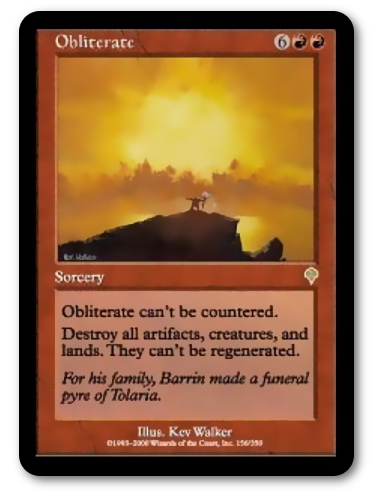
The thing about this card that always made it echo to me, of the past of Dominaria, is that I knew Barrin because of cards like [mtg_card]Rewind[/mtg_card] or [mtg_card]Relearn[/mtg_card] or [mtg_card]Catalog[/mtg_card] – cards that were blue, and thoughtful and often fairly cost effective. To see that name, a name I associated with care and consideration associated with this – and with the death of one of the most powerful-seeming places in all of Magic? It was astonishing.
But then we had the story of Chainer and Kamahl, which is a story told in the wake of the end of the Weatherlight, now far removed from the Weatherlight’s problems, and is mostly a story of boys who can’t communicate meaningfully and the women that suffer because of them. It was learning about legends and a war and the world collapsing and all of it was done in pursuit of a powerful object that tore up the world, and then… at the end, with the disappointment that was Karona and her story, we left.
The Recent Pasts
We left for Mirrodin.
Which was messed up because of Karn, a member of the Weatherlight, about whom I did not care. But it wasn’t so bad. The novels weren’t that good and I didn’t care, but at least, I reflected, we were moving away from the years-long saga of Gerrard Capashen, About Whom I Still Don’t Care.
Kamigawa happened, then Ravnica happened, and they were interesting and new and took the story in directions I wanted to see more of.
And then, finally, after years away, we finally had a Triumphant RETURN TO DOMINARIA in the form of Time Spiral block, a block of Magic so bad that it was about then I decided to stop writing about it. Up to that point I had seldom found a Magic set that was so intensely interested in smelling its own farts as Time Spiral. Nostalgia, it crowed, Nostalgia it purred, after 8th edition had made a show of being The Set That Drew From All Of Magic’s History, and the fuss of Power 9th (which was a hoax). We got Time Spiral, which wanted to bring us back to a simpler time when you could open a booster you spent money on and get a Squire, or blue got burn and –
I didn’t like Time Spiral much. I said as much at the time.
When the announcement was made that we were returning to Dominaria — FOR THE SECOND TIME — I wasn’t awash with the nostalgia that everyone else seemed to be. I think part of that is that the older period, the actual Weatherlight era of the Weatherlight story, was never something that resonated with me.
The Now
First things first, I know I have an emotional hype deficiency. I’m not That Guy. I don’t get frothingly eager about new sets.
I thought Ixalan looked cool going in to the spoiler season but didn’t find it interesting enough to play much of after one deeply depressing prerelease (0-3-bye). Dinosaurs are cool, Merfolk are cool, but the urge to get involved and play Standard at the time just wasn’t there. My interest in Kaladesh and Aether Revolt standard was pretty strong, as a casual player, and a Commander player, as with Innistrad – but it seems to me that I just don’t see the kind of things I like doing in sets. I hope [mtg_card]Deeproot Champion[/mtg_card] gets a home, for example.
But Dominaria comes out tomorrow. It is burgeoning and it is fullsome and by now – when it goes up, not when I’m writing it – the whole spoiler will have come out. It will be full of references to the history of Magic, and mechanics that remind you what Magic used to be like in the era of Armageddons and Counterspell, and it will try to mulligan on many bad decisions made in the past and introduce a host of Kamigawa-level uncommon legends and it will strive to be a set to love.
I am afraid, however, at the moment, as someone who does not like Dominaria, who does not see it as his home, who does not see the urge to go back as exciting, that this set, so far, is not thrilling me. I am not excited. I am not hopeful. This set has done nothing, so far, to convince me, someone who was glad to leave, that it’s good to be back. Which is fine – it’s not meant to. And as a person with my life, I am always going to have a different view of nostalgia for its own sake.
I watch my friends point at cards and excitedly turn over their meanings or their applications. I watch people crow about new printings as if it validates their position on old cards. I see old names attached to new characters who have a chance to be interesting, I see new stories being told with old pieces that maybe, maybe this time, I will find something to care about, even through my doubts. I see the work of people I respect to reinvigorate and restore something that was always broken and never whole. I see people explaining and re-explaining those old stories to one another, so happy, so happy to be able to point to those things that mean something to them, and see them made real anew. And that makes me happy.
I still find myself, ever yearning, to reach for whatever till there is, and look to the next horizon. Because Magic always changes, and Magic is always going somewhere. To me, that is exciting.
Oh And
Hey, Modern you now have the entire Onslaught Goblins deck in you, choke on it. 😞
Anzac Biscuits!
Hey, everyone! It’s Anzac Day! That means it’s a time to celebrate our culture and our Anzacs, which we do with games of 2-up in pubs, singing three songs, and deep repression of our thoughts about how the impact of our complicity and promotion of white supremacy leads to the radicalisation of our own citizens and the disenfranchisement of our marginalised people pushes them towards criminality that we then use as pretense to further disenfranchise them in ways that result to our perception of ‘the other’ and the deeper entanglement in international imperialism that sends our soldiers to places that have nothing to do with us in order to die, and of course, making Anzac Biscuits!
I got this recipe off the Australian War Memorial website, and only made some small alterations. It’s really good, you’ll like ’em!
Ingredients:
- 1 cup each of rolled oats, sugar and coconut
- 1 tablespoon syrup
- 3/4 cup flour
- 2 tablespoons butter
- 1 teaspoon bicarbonate of soda (dissolved in 2 tablespoons boiling water)
Method
- Melt the butter, as a symbol of the way we viewed our culture as a melting pot where a variety of different cultures could come together and form a very yellow homogenous whole, much like the Simpsons where we try to keep a minimal number of brown people who we routinely mock and divorce from proper job opportunities that respect them and their cultural backgrounds.
- Add syrup to dissolved soda and water. Combine with melted butter. This will form the wet ingredients into one larger body that should smooth out and homogenise in the same way that we treat all our population as acceptable if we already have them and they don’t do anything to stand our or remind us that they are not, in fact, lily-white.
- Mix dry ingredients and stir in liquid, with forceful, strong motions like running a death camp on another country’s territory that both that country and the UN have decreed an illegal human rights violation. The ingredients will present some resistance, just like how the people in those camps do things like hunger strikes, appeals to the press, explicit references to sexual abuse by guards and overseers, and at least one man setting himself on fire, but just as we can dismiss those actions as ‘wanting attention’ you can ignore the resistance of the ingredients. Just smooth them out and ignore the way you feel.
- Place small balls on to buttered tray and bake in moderate oven. It doesn’t matter how they’re composed, if they’re a decent mix, or their size, or really anything at all, because making a bad Anzac biscuit is pretty hard if you get the mix right, because they’re made out of components designed to be durable and last long over the transport from Australia to Gallipolli, a war we were entangled in because an Empire wanted to spend our blood to earn themselves a minor convenience, and we lined up to ensure that we wouldn’t let it happen again, again, again, again again again.
- Lift out carefully with a knife as they are soft till cold. Don’t bite them too early or they’ll break!
I hope you enjoy this Anzac Biscuit recipe. They’re really good!
Game Pile: Planescape:Torment
Odds are good, unless you’ve known me for a while, you don’t really know or can’t chart the history of the Game Pile. Originally, the focus of Game Pile was a review series that’s designed to be entertainingly useful in promoting the sales of games I like and the discouragement of games I don’t, with the notion that seeing me do that would get the attention of gaming editors, and maybe get paid for this work. Then I moved on to trying out a new model of how reviews should be, with my view of a standardised release schedule and form, which sought to tell you reasons you might want to play a game, rather than whether or not a game was, itself, fundamentally good or bad.
Then, in the most recent iteration, Game Pile has taken on a shape I really appreciate, which is to use the game as an avenue to discuss what the game made me think about or care about. It is the treatment of games as art objects. Sure, I try to give you an idea of what the game is like, but I do that by trying to only focus on games I like, and the games I like I tend to like because they make me feel and think something. It’s a nice occlusion.
With that in mind, then, I don’t want to tell you you should buy Planescape Torment. It’s a good game, I like it. If you like slow, talky-ready RPGs, it’s really good. Telling you that is almost the definition of old news and you can probably find someone to wax more rhapsodic about it with a cursory glance around.
Instead, I want to tell you about four stories from this game, and what they mean to me.
Spoilers ahead for, y’know, Planescape: Torment.
Continue Reading →Beast Mastery Masterminds
So back in City of Heroes there was this type of character you could make called a Mastermind.
Masterminds were a pet class – you could get three tiers of pets, which were constant; you didn’t have to manage their upkeep, and you could buff them like they’re players. They also had some mechanics about directing damage around passively, so you didn’t play like an RTS, but you instead were a superhero villain ordering your goons to beat people up. It was a great archetype, and everyone I knew with one was proud of what they could do with it.
Right at the end of City’s life, we got a brand new power set for the Mastermind: The Beast Mastery Mastermind. Instead of soldiers or ninjas or robots, you got to command a horde of animals, like you were something people misunderstood about Kraven. Point is, you got to be cool and have a big pile of animals around you.
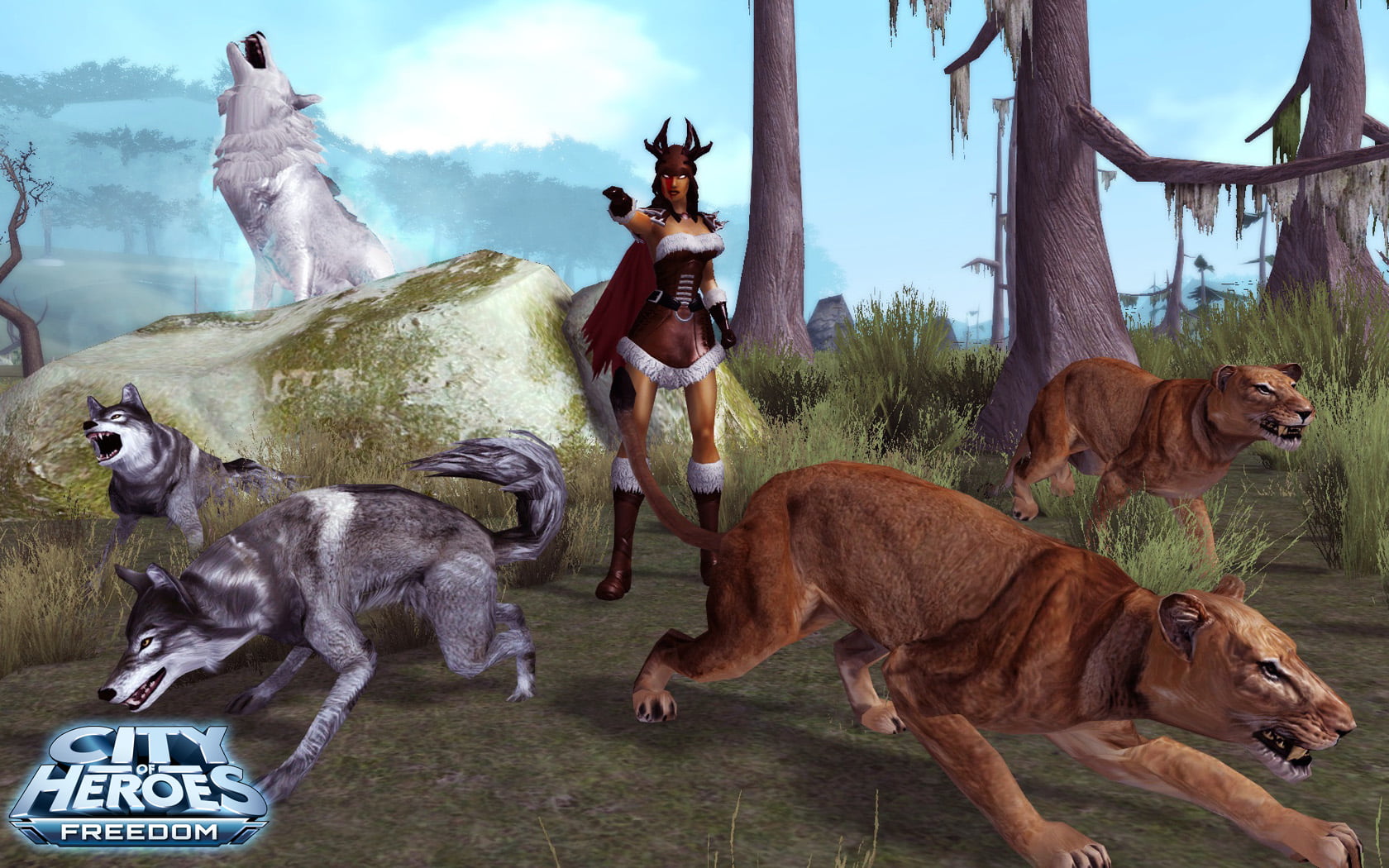
The thing with the engine in City of Heroes is that it was a little bit, kinda mediocre about some things. The only way to stop the existence of a game entity was to give it a kill order – so pets you summoned, little robot pets, would die when they timed out, and they’d explode. When the Mastermind was originally conceived, on City of Villains, if you ran into a door, your pets would run in the same door. But if you disappeared, they’d get a kill order. No big deal, that’s part of why the City of Villains, the big transport network which used the ‘disappear’ command instead of ‘go into a door, then disappear’ command, was a ferry, so you’d run into the ferry, and your crew would all collapse dead inside it and fall through boxes and stuff.
But when you went to Paragon (as you could by this stage) and ran around with a Mastermind, any time you used a train, your pets would get that kill command. You’d hop on a train and move on and all blissfully unaware, as you arrived, that the pets you had now were newly summoned for your new region of map. No big deal, right?
Thing is, if you weren’t the mastermind player, what do you see?
You can guess, right?
And making it worse, the release of a new set provoked a huge influx of new people trying out this new Mastermind set, and often whole teams of them. So you could walk into a train station and see dozens upon dozens of dead animals.
Cities And Towns
Let’s talk about a game idea, and what I want to be sure I’m saying with it.
This game idea is known tenatively as cities and towns. It actually started as a colour matching/multiplier game, a math game for my nephews but I liked the metaphor of it being about things rather than stuff, and so it slowly took its shape as a town builder.
The notional mechanic is that there’s a common pool of cards, the city, that determine the value of the cards in each player’s personal pool, their town. At the start of the game, you deal each player a starting card that’s not worth anything, but gives you a place to start from, and put three cards into the city, to give people a standard view of how things are valued. This means that putting cards into the city can represent an explosion of value for you, but it’s something other players can piggyback on – if you have two of type A, and there are two more A in the city, you get four points, but any player who builds an A gets two, too.
I like this mechanic for representing things like trade dependencies and culture growth. A university on its own isn’t worth as much as a university surrounded by other smaller towns with universities, and a market thrives when there are other, connected markets. Players are simultaneously building the scoring mechanism for the game as they are building their own little spaces in the game.
Then came the time to make the game pieces, and I hit an interesting conundrum. See, one thing I could do is go with a pastoral, adventure-game vibe, you know, the not-necessarily-fantasy, but-probably of kingdoms with farms and quarries and woodcutters, as you see in games like Settlers or whatever.
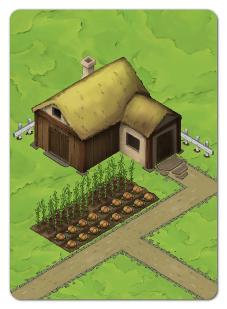 The next option, however, is to build assets using something like these Kenney assets, isometric city representation.
The next option, however, is to build assets using something like these Kenney assets, isometric city representation.

Now this choice opens up an interesting question. I think that a modern urban city and smaller town thing presents an interesting set of different mechanics – after all, you have faster communication, and maybe there are some buildings that can’t go anywhere but in the city, and some things that can’t go anywhere but the town, because of infrastructural needs. Is there a need for variety the same way in buildings when they look modern, when they could show similar buildings on different blocks with ‘zoning’ rules?
But then we hit an additional question: What about redlining? What about the history of deprivation? If these are buildings that look like cities, but outside of cities and minus the skyscrapers, am I just building suburbs? And if I am, do I really want to present a scenario to players where they want to build more schools in the city, because it makes their schools out in the suburbs more desireable?
Now, I’ve made my decision – the game’s underway. But these are decisions you gotta be prepared to consider and confront. When you make a game, you are responsible for the things you choose to put into it, and the assumptions you make about what the game should have in it.
Story Pile: Altered Carbon
When you get down to it, Altered Carbon is a series that doesn’t so much need recommendations as much as it needs content warnings. Up front, the series features gender, race, and general body dysphoria (being in a body that’s ‘very wrong’), graphic torture, death, murder for pleasure, torture for pleasure, sex workers, sex worker abuse, sex worker marginalisation, realistic and sympathetic AI death, sensory overload, sensory deprivation, descriptions of nightmares, depictions of trauma, hetero bonking, consent-comprimised hetero bonking, nudity, violent nudity, cutting and –
Good grief, what isn’t in this series.
I feel a bit bad about this because the avalanche of things to warn people about in this show are all reasonable things. It paints the picture of this series as gaudily, grindingly nasty and full of vile indulgence. It’s not like that, I promise – it’s more that the series has such a breadth of nasty things it deals with that to have one leap out of you in the story as a surprise is like finding a razor blade in your ice cream. It’s not only unexpected it’s also extremely bad if you weren’t expecting it. The emotional punch is all there, I just don’t want people going into this series blind, especially since, for all of its content warnings, I really liked Altered Carbon.
I’m not going to talk about the greater universe of the story, though, I’m not going to run down the plot or its themes or its meanings. The story is a neon noir cyberpunk dystopia that uses income inequality as its most intense theme, its central character is a jerk, and it weaves together his history and his present. That’s all good and I might talk about them another time, but instead, we’re going to talk about one thing.
We’re going to talk about Poe.
Don’t worry, we’re also not going to spoil the plot!
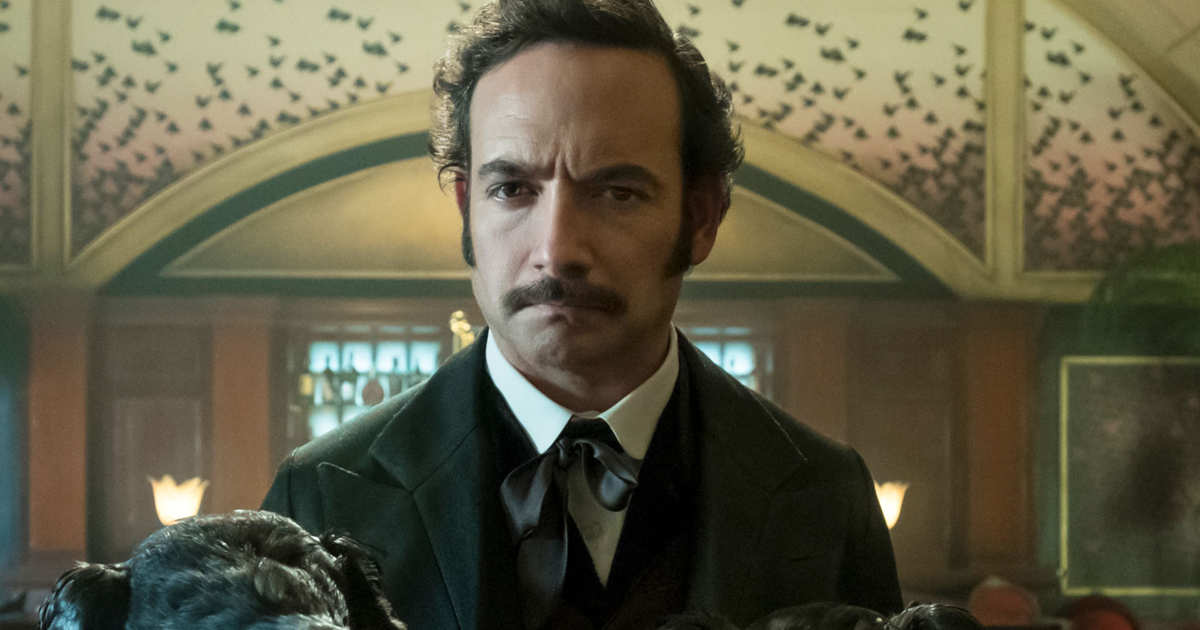
Ned Kelly’s Head
The story of Ned Kelly is a pretty interesting and contentious one but the briefest summary of it is that a poor immigrant family got treated badly by the system for just long enough that one of its members renowned for being a badass got sick of it, acted out in an extremely severe way and culminated in his fighting his way through waves of cops wearing an actual literal suit of armour. Caught by the police he hated, he was tried for crimes he very much committed, said goodbye to his family, and was executed, and it’s generally held by the people who don’t like him that that was an entirely reasonable end considering all the bank-hurting and cop-killing he did.
There’s some contention about the character of a dude who broke into banks, held people hostage, then burned all the credit records after taking cash because he hated banks and debt, with a bunch of people pointing out all the wrongful arrests and power abuses in his life making him violent, versus the people, often families of cops, wanting to know why there’s no sympathy for the cops who did things like grab Ned’s dick in public.
It’s a weird story.

Anyway, I’m not here to talk to you about the dude who I think is kind of awesome even if I don’t actually personally think I’m cut out for a life of shooting cops in the face. I wanna talk about what happened after he died. More specifically, I want to tell you about Ned Kelly’s head.
Ned Kelly’s head was separated from his body after his execution. He wasn’t beheaded – no, he was hanged by the neck (until dead), and the removal was for medical research purposes. They wanted to phrenology his skull, to see if there was some sort of proof of criminality in the bumps of his bean. This study was, you might imagine, inconclusive, but not for the reason you’re thinking.
The study of Ned Kelly’s skull was inconclusive because it never got properly studied. And it never got properly studied, because the cops were busy playing with it.
I said playing with it.
I said, the cops took his head off and played catch and table football with it.
The head went through a whole arc of history and we’ve only just now recently – 2015 – interred Kelly’s bones in the place they were supposed to be interred, by his family’s wishes. But that body was interred without a head, and the thing that makes this even more weird is the detective work we had to do to prove whether or not the head was the right head. That meant tracking down a descendant of’s mother through matrilineal progent- you know what, there’s a full article here about it. Your tl;dr, though? The most famous bush ranger of a generation’s head went missing because cops were mucking around with it.
Now, one of the angles in the anti-Kelly story is that hey, Kelly wasn’t justified in hating cops, cops were just doing their jobs.
But if you were just doing your job, would you pull the head off a dead man and play catch with it?
Why?
MTG: Pet Cards IV, Ravnica Block
Ravnica is an incredible block because it’s full of casual deckbuilding staples, and it’s the time I was actively writing for Starcity Games. When I look back on Ravnica, there’s a ton of stuff I think of as ‘great cards,’ even though they’re niche enough to need the whole deck built around them.
With that in mind, I will say the Ravnica bouncelands and signets are all-purpose good cards that casual decks can run and should always bear in mind for building. Whatever colour combination you’re in, you can make use of those ten cards, or can at least consider why not to use them. There’s also a bunch of robust utility effects at common and uncommon, with cards like [mtg_card]Mortify[/mtg_card], [mtg_card]Putrefy[/mtg_card], [mtg_card]Watchwolf[/mtg_card], [mtg_card]Faith’s Fetters[/mtg_card], [mtg_card]Pure//Simple[/mtg_card] – just a whole lot of handy things that you can slot into decks. Not the kind of ‘pet’ cards I find myself making excuses for. So like, that kind of stuff? They’re not going on the list.
This list was hard to cut down and that’s after I set aside this special clause.
Shirt Highlight: House Logos!
Ever have a day where you had some things you needed to get done, but you were so sick with anxiety and rage you couldn’t, so instead you threw yourself into something in the hopes of making one person maybe crack a smile?
No?
Hey, good, good for you, I am so glad you’ve never had to be here.
Anyway, today I fancied up these shirt designs I’d sketched out:
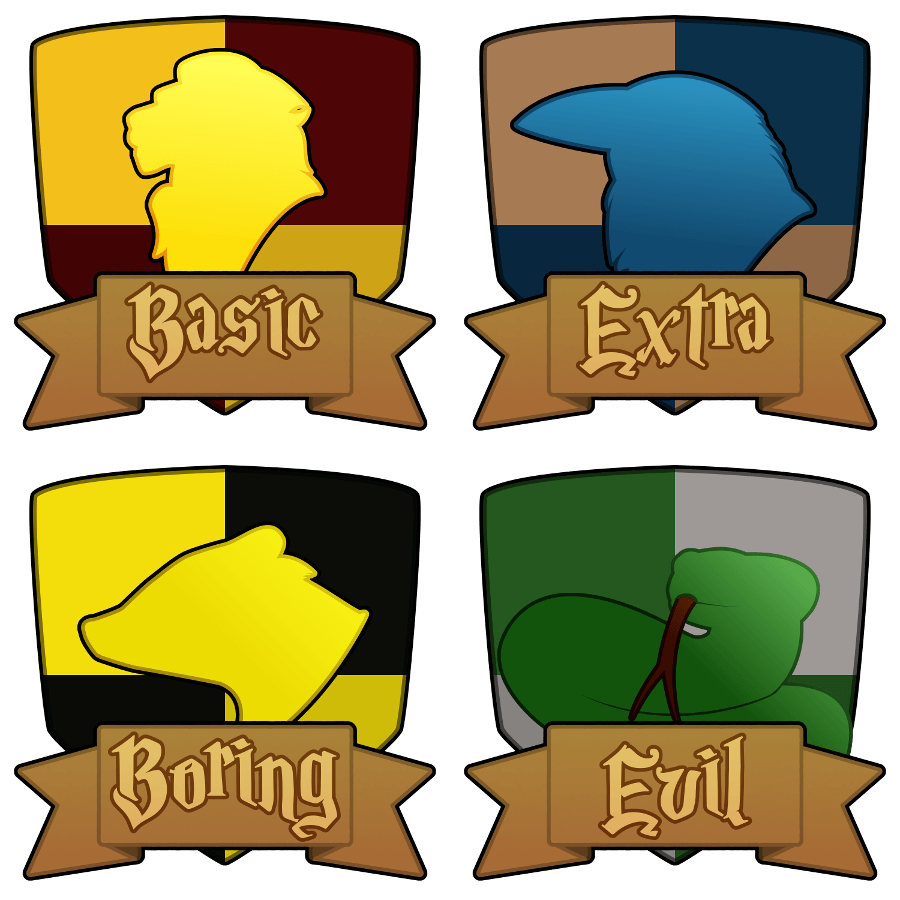
If you want to get these shirts representing your favourite Houses for the School Cup based on whether you feel you’re Basic, Extra, Boring or Evil, you can check them out on my Redbubble. There’s even one shirt that holds all four designs to show people all at once!
If, by the way, you like these designs but don’t want to buy a shirt, don’t forget you can always get stickers of what I make, and stickers are often very cheap, especially if you buy in lots of 10 or more!
Game Pile: Baldur’s Gate 2 Mods
There is however, one truth to all these Baldur’s Gate 2 memories. The truth is, I haven’t played Baldur’s Gate 2 as she is coded, for much more than one or two years. What kept me coming back, what kept me playing this game over and over again was the modding community – which saw the vast scale of the game, and still looked at places where it was incomplete, where the sheer scope of the project had failed, and looked into adding to the game what had been begun and not finished, what had been tried and not done, and what was needed but never realised.
Baldur’s Gate 2 is a pretty decent game. But to make it a great game took people who loved it.
Continue Reading →Spending and Earning Patreon Money
This is meant to be kind of a state-of-the-blog as pertains to how I’m using your Patreon money to make content and how and what it’s being used for.
The Rural Purge 2: Fleeing New York
Hey, remember when I did that thing on The Rural Purge?
Well, following on from that, and from my habit of recycling things I hear on other media criticism outlets (criticism in this case being ‘to regard carefully and thoughtfully’ not, ‘this sucks!’), it was brought to my attention that there was kind of a more recent, more inverse Urban purge, or more specifically, a New York purge.

During the 90s there was an odd, interconnected web of sitcoms set in New York. It’s a bit of a funny coincidence fest mostly born out of the nature of sitcom actors. Actors in the same core of shows tended to show up in one anothers’s shows, and with a single unifying broadcaster, they even did continuity gags and interconnected nods to one another’s shows. You know, Kramer shows up in Mad About You (probably saying something deeply misogynistic off-set), and Helen Hunt’s … Mrs… Paul Rieser… shows up in FRIENDS, and you know, whatever. So it was just one funny thing that there were all these series, interconnected, in New York, that were all part of one big continuity.
And they all kinda just died around the same time.

The source I got this idea from claimed 9/11 did it, but I don’t think so. I think it’s just the natural ending of a lot of series, the ending of an era, and a lot of fad-based series development collapsing at the same time. But what happened around this same time was the sudden absence of series set in and around New York. There was this weird split in continuity, where American TV went from, during the most aimless and empty genre, being about New York City to suddenly being about absolutely anywhere else.
What made this especially weird, as far as trend-chasing goes, is that when you look at those shows, that little New York sliver of time… barely any of them are about New York?
I haven’t gone and rewatched a dozen sitcoms for research (aside from Caroline in the City, because hey, that one’s for me), but mostly none of these sitcoms are about living in New York City. Real estate woes that should be present and aren’t are a point of almost hackish comedy in the Friendsverse – you know, all these people with huge living quarters in the middle of the most expensive city in the world (probably), whose salaries could not afford it at all.

There’s also the way these shows somehow featured a tiny number of nonwhite people, despite the racial diversity of New York. And there is no point where a dude in hotpants with a snake wrapped around his shoulders walked across the street to take a shit on a cop’s shoes. It’s a New York where a pair of gay dudes with a baby was seen as a ridiculous assumption for Joey and Chandler.
So it wasn’t anything like New York as it exists. It’s just about a certain, oddly insular New Yorkness, and as an effect of the insular, contained nature of a small group of talent making television sitcoms.
Story Pile: The Zombie Apocalypse Of The Author
I’ve written about the idea of ‘the death of the author,’ but to crash course it: The concept of death of the author is the idea that the interpretation of a story is about the person doing the interpretation, not about the person who made it. That is, there is no ‘author’ who can be said to truly represent what the story means in any and all circumstances. There’s a lot more to it, but it’s mostly cigarettes and sadness. That’s your basics:
The Death of the Author is the idea that the Author does not have exclusive rights to define interpretations of their work
This is a great idea and its most obvious modern application is fanfic and fan media. The story says Snape is an ugly snooty jerk, but that doesn’t matter, because you read the book and your interpretation involves no such thing, and the image of these characters interacting in your mind is perfectly valid. You don’t get marks for how the story works in your head, nobody’s grading you. If other people can grasp what you’re expressing when you share it, then that’s all that matters.
The thing is, thanks to Twitter and the Web 2.0 era of produsage, one of the groups of people getting involved in further creating fanfiction for these works and they are most annoyingly, the original authors.
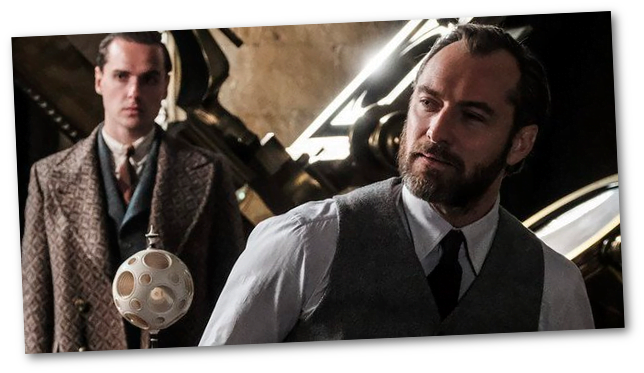
Thanks to the unprecedented access we have to authors these days, we have a whole host of authors who are actively and aggressively attempting to insert into their own texts things they didn’t bother to try and put there the first time around. I’ll always kick at the Harry Potter franchises for any reason, but specific way that Rowling has claimed that Dumbledore is gay will always bother me. This has recently come to a head – again – with the upcoming Fantastic Beasts 2 movie that wants to have Young Dumbledore but also is ensuring to absolutely not show any of that icky gayness that the story isn’t about at all.
What this means is that any given reading of the text, these days, is not taken as a reading, with people willing to examine it, but as with all things in nerd cultures, we bury it under the toxic intention to prove it. Work must be tested or verified to be acceptable, interpretations must be justified to our satisfaction, and thanks to the availablility of certain authors, and their willingness to pontificate on what their work really means, we are now facing Zombie Authorship.
The author lies not still in their grave but shifts and moves, ever tumultuous in their position, expanding the work a tweet at a time – Werewolves are AIDS, the nudity is justified, you will e’re love the story for its manifold purpose. Tarantino, Martin, Rowling, Kojima, they each inflate their work not for its art but to remain alive a word more, to continue, to consume.And so the zombie slough flows over us all, and we do not engage with or interpret or study art, but we see it all as grey slurry that washes over us. The nerd cries out, be canonised, be purified, be true, and our eyes grow dull and dull and dull.
As for the Death of the Author, the sad thing is it contains within its own explanation; we bring out experiences to bear interpreting work.
The act of creating the work is one of those experiences.
Thanos Is Racist Now,
That got your attention.
We’ve been told what the motivation is for Thanos in the upcoming Infinity War. Feel free to jump out here, because you want to avoid spoilers, or because round-the-backtalk about movies bothers you, or because comics are stupid. Whatever your reason, here’s an escape route: Here!
MTG: Canadian Highlander And Combo
First things first, I do not play Canadian Highlander. I do follow the North 100 podcast, and I do have a ‘team’ I root for in the 30-player strong metagame of the area: Allison, Queen Of The Rock. She’s playing green-black value control, every time, every event, and I will back that all the way.
Nonetheless, I am a Magic Player, and with that in mind, I want to talk about a thing that successful, well-established and well-known Magic Players could be doing better.
The Bright Conspiracy Theory
Okay, hold up.
I don’t want you going to think this is true. This is a hunch. This is a notion.
I want you to understand I don’t like holding hypothesis that can’t be easily proven. I grew up around conspiracy theorists, and I feel like I can recognise the mental habits that make a conspiracy. Conspiracies rely on being nebulous, unfalsifiable and emotionally satisfying. That is, they want to attribute blame to an unknowable ‘them,’ they can’t be shown to be wrong somehow, and they feed into emotional responses we already have.
Furthermore, I haven’t seen the Netflix movie Bright. I’ve seen its advertising, and that convinced me that Bright sucks and I don’t want to watch it, which in a reasonable world would be a good sign that the advertisers were good at their job, but that’s not how advertising is advocated as working in this mixed up ole world of ours.
With those clauses in mind, the actual quality of Bright and if you liked it, is really moot.
Instead, I want to talk to you about how and why Bright gets talked about at all.
Game Pile: Throne of Bhaal
You might notice that last week, we barely talked about how Baldur’s Gate 2 played, and we’ll get to that, but all you really need to know for now is that Baldur’s Gate 2 is a meandering, sprawling epic, too large for even its own ambitions.
And Throne of Bhaal is not.
Continue Reading →Sharing
One of the weird things about growing up in fundamentalist church with a deliberately stifled education is that some concepts kinda just get thrown around and you never really learn what they are. This meant I had to teach myself a bunch of this stuff, and I realise, there are some people similarly uncertain as to where the heck the idea of Shares come from.
The basic idea of what a share is is that it’s a portion of something. The place it got its start – more or less, there are always earlier versions of things, but the place it sort of got its modern kick-off – was during the (absolutely god-awful) trading history of large fleets of vessels, things like the Dutch East India company.
The way these things worked was, buying a boat – like, a whole boat – and managing an expedition over to do trading was, as an up-front cost, totally ridiculous. Like, we talk about wealth disparity, but it’s kind of hard to translate wha that was like when you’re talking about a period of history when you might not even exchange money for food, because it simply wasn’t affordable. So there’s a striation of wealth between poor and wealthy people that’s like, mindboggling, and I tend to think about ships from the perspective of the poor people. Each one of them represented more than a lifetimes’ worth of wealth, so the idea of rich people owning multiples is kind of impossible.
Anyway, even so, the task of sending a boat to get goods for sale was still a gamble – every time it went out, you didn’t know if it was coming back, and if it didn’t come back, you were out a ton of money, enough to ruin someone. The solution, then, was for people to band together – wealthy people, mind you – and instead of buying one ship, buying one tenth of ten ships. When each ship came in, you got a tenth of its proceeds. If one sank, you were out a tenth of a price of a ship. Then they got really fiddly with the numbers, and bookkeeping got involved and you started to see people making more and more careful subdivisions of the shares, and things you could do to interact with the shares and eventually things got decoupled from ever needing to turn a profit at all, because everything about markets eventually sucks butts.
Still, the thing with this whole system that makes my ears twist is, no matter how I think about it, the more I think it’s kind of inevitable that people will come up with this idea if they have some way of representing it. And then the weirder thing is: We have this idea for buying and owning shares in objects and businesses, but it seems fundamentally inimical to the current mindset of the world to have shares in the government you’re part of. Like, taxes are seen a an imposition, rather than a percentage ownership of the country you’re investing in.
The Stormtrooper’s Lament
I work at a university. This means I see a lot of students, and students like t-shirts. They like t-shirts, and they like Star Wars. And because they like Star Wars, they like wearing shirts that show the words to Star Wars, you know, the lyrics, or whatever. Star Wars has lyrics, I’m sure of it. Anyway, the point is, I see a lot of Star Wars shirts, and since being a walking ad isn’t enough any more, people go for weird and offbeat and ironic riffs on Star Wars.
So I see a lot of jokes about Stormtroopers missing.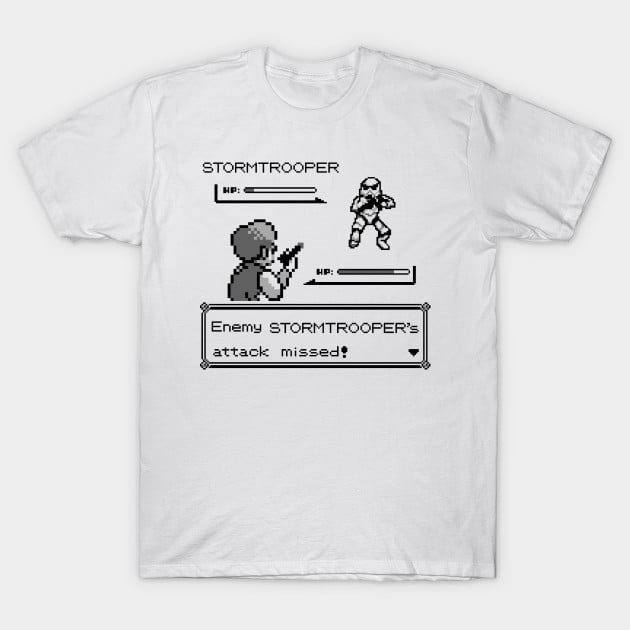
Now, I am not an expert in Star Wars, which is surprisingly hard when you consider that my field of academia is kinda adjacent to Fandom Studies, which is basically the study of Star Wars, And Now Harry Potter and Dr Who I Guess, at this point, but somehow, I am not really all that in with Star Wars. The main thing I know about Star Wars is how much the people love it love to shit on it because that’s how they show they Star Wars the best, like, being the people who love the movies enough to point out all the ways it’s dumb is how they show they’re better Star Wars fans than other Star Warsers.
I think that’s how it works. It’s like, in the rules of Star Wars, like encoded in the Force.

Now, again, I’m no expert, but this question about Stormtroopers missing in a universe where there’s literal actual destiny and an actual force that actually exists and actually intervenes in reality to the degree of letting people teleport their soul ghosts across vast distances and huck objects around and lightning and stuff, why people think that Stormtroopers miss rather than the people being shot at avoided the shots.
It’s really weird, like, the series is constantly hammering away on the Force guides, the Force determines, the Force makes the universe hold together, the Force is super important, but when people witness a faceless, nameless stormtrooper doing the best job they can do, they don’t think ‘maybe the Force this whole series is constantly all about is doing something,’ they think ‘hah, that guy sucks.’
It isn’t just the troopers, though. There are all sorts of near misses in the story, all sorts of things that could have gone wrong but didn’t, all sorts of moments when they sort of had to lean on the concept of the story itself to keep the hero, Johnny Starwar, going through the narrative. There were coincidences that pulled people together, and people point at those coincidences and say ‘well isn’t that silly? It’s like there’s some sort of conventional plot point dragging everything together into one spot!’ And normally I’d be okay with making fun of that but that’s a thing that exists in the story, and the ability to control or channel it is part of how the story even works, as a story.
Yet it’s way easier to make fun of the things in the story for being… affected by the story? In a universe where the story itself has power over the story? Where being able to manipulate the nature of reality, where complying with what the story wants you to be doing is a way to survive and live on?
I’d say I’d wonder if there were more ways the story could make the force obvious but it kinda can’t, because they never shut up about it.
The images for this post were obtained from TeePublic, but that doesn’t mean they’re presented by their original artists. Trying to find the original artists only built the suggestion that the original artists are not actually posting them on TeePublic.
Story Pile: Kakegurui
It’s not often people approach me and suggest anime to me. I’m pretty fidgety about anime these days, because I watch it subbed (for no reason I can adequately explain) and I don’t like watching TV shows I can’t watch while I work on other things. Still, it was in Netflix, it was easy to get, and what they hey, it looked kinda interesting so let’s check out this anime.
It opens with a character losing a poker hand based on an Amazing Hand, which is a huge red flag for me about people not knowing how poker works. This was not an auspicious beginning for a series that I later heard described as Death Note For Money.
Anyway, I quite liked Kakegurui.
Continue Reading →“Prove Me Wrong!”
We don’t talk enough about falsifiability.
Specifically, we don’t talk too much about how importance it is to think of things that are important to you in terms of what can prove them wrong.
Falsifiability is a wonderful thing. It works in design, for a start. You think your design will lend players going this way, and all you need to do to see if your design does that is to see if the players don’t.
Falsifisability is great when you’re learning about science! What would prove this theory wrong? Well, then we keep an eye out for that. The Bible tells us that it’s true, but all we need to do to falsify that is to find a single place the Bible isn’t true – and with that, the whole proof collapses. Easy!
Falsifisiability is also good when you’re considering your own behaviour and if you’re being an unreasonable b-hole. Is there anything this other person could do that would change what you think of them? Is there anything that might indicate you weren’t 100% in the right? And if you can find that, how will you handle it?
The darker half of this thought is that the unfalsifiable is the sign of the conspiracy theory. The internet stranger whose every actions are always false and evil, no matter what she does, the political system that resists all negative examples, the personal belief that resists any proof to the contrary? Watch out for those. That is a mental space where some abusive earwigs live.
MTG: Pet Cards III, Kamigawa Block
Here’s a set for your pet cards, dangit. Kamigawa was rich with flavour, but it was also spending a much smaller budget of power cards, which meant that even the cards that were powerful or good were doing it in ways orthogonal to one another – you either got overdosed on unnecessary virtue (like Snakes) or effects that never really had a home (like Dosan). It’s also cycle happy which means even the cards in it that are kinda Just Okay tend to be seen as part of a cycle, so they’re less forgotten, less pet.
How To Write A Light Novel
Hey friends! There’s a Lite Novel Jam going on over on itch.io. Did I mention there’s a Lite Novel Jam going on? I only ask because I want to make sure that you’re aware of the Lite Novel Jam going on.
There are good odds you have never written a Lite Novel before. That’s great. Neither had most of the people who wrote their first Lite Novel and that’s exactly what this opportunity is for.
Why should you write one? Well, because you want to write one. But this is a particularly good opportunity because right now, you have a gathered audience of people who are at the very least, going to read your book title and maybe give it a shot.
What I want to present here, then is a super-duper crash course on a Lite Novel, as suggested by someone who has written, let’s say, comparable stories.
Scope
A Lite Novel at its litest weighs in at around 8,000 words, quite short. For comparison, this blog post is 1231 words, and you’ve read around 200 of them. When you have only a small number of words, you don’t have a lot of room for what we call world building. You don’t have room for a huge cast or a glossary of every character and their relatives. You need to focus on a small group of characters, maybe as few as two or three, and how they get through their story. You don’t need to isolate them – just like, remember, if you’re doing a story set in school, you don’t need to flesh out every single other student. Focus on what you can.
This scope also means you don’t have tons of room for complex explanations. You may have a reason or an explanation for how your hacker exploited McDonalds’ code for their registers, but you don’t need to put that there.
Part of why we give these Lite Novels such silly, ostentatious names is because that title becomes part of how you set the scope for the story. Substitute Familiar pretty much straight up tells you that hey, familiars exist in this world, and there’s probably, like substitutes for them like substitute teachers or other temp work. It’s a load-bearing title but that load bearing does a lot to frame what you read.
It’s also typically a genre full of what’s known as magical realism. That is to say, there is an assumption that things are, pretty much, like reality, and occasionally, magical things will happen, but it will go uncommented on and unexplained. This can help you with the scope. If your story wants to have a character turn into a talking tree that’s got va-va-voom hips, you don’t have to give the backstory for how that happens, you can just have characters reacting to the thing itself.
You know what does this? Gremlins. Yeah, I know, weird, but in Gremlins, there’s no point where grown adults, encountering Gizmo, go ‘that’s a totally weird thing, and a new animal, and why can it talk? That’s extremely weird.’ Nobody notices or remarks on Gizmo, Gizmo is just there to set up the next bit of the story, and be adorable.
Structure
Okay, so there’s some temptation when you get diving into a lite novel to rip off the standard hero’s journey, or if you don’t know it that way, the star wars plot structure. You know, you start with some sign of a problem, you introduce a character, then you explain their world, etc etc – that’s fine for a sprawling epic, but you don’t have that kind of time or space.
What I want to suggest for you, in Lite Novels, is the Pixar plot.

The Pixar plot structure is something you can reduce by watching any given Pixar movie, and it doesn’t matter if they’re big and epic like Wall-E or small and personal like Ratatouille or Toy Story. They’re stories that follow the same basic pattern:
“Once upon a time there was ___. Every day, ___. One day ___. Because of that, ___. Because of that, ___. Until finally ___.”
The important thing about this structure is that it often doesn’t need a villain or an antagonist as much as it needs a disruption, an interruption. Now, most Pixar films feature some form of opposition or enemy, but you’ll notice how they’re kind of just… there, often only there to compete for something at the end or in the mid-point. Consider the evil Chef in Ratatouille or the rival driver in Cars. They’re not there to enact a grand plan. They’re just there to provide some contest at the end, because you’re at the second Until Finally.
These Pixar movies start out with a pretty good status quo. Life is okay, and people are pretty happy though there’s some small thing, one single thing, that’s… flawed. Then something changes them, and the protagonist is not happy about it, and then something happens and they resolve it, and return to that status quo without the flaw. That really is it. Woody has a nice life as a toy except he has to be paranoid about new toys arriving, then Buzz arrives and he gets mad about it, the Buzz plot is resolved and Woody is happy again with the paranoia removed because now he recognises new additions to his life are potential friends.
This is the formula I recommend for your Lite Novel and I recommend it in part because it’s kind of how Cat Wishes works. In Cat Wishes, everyone at the start of the story is pretty okay with their lives but all have something going on that they keep hidden. Then a cat grants a series of wishes and they’re left trying to adjust to their new life, and when it resolves, they more or less go back to their former life. They’re still friends, except now, you know, they’re catgirls and one of them is making out with someone they really wanted to make out with.
That’s all you need! Think of the end point for the status quo you think would be cool, then you can work backwards to think of the way those events might have looked before.
No Need For Bummers
Finally, you don’t need to make your story sad or miserable or anything like that for it to be fun or worth reading! If you want your story to be as simple as characters going to the store and negotiating around some fun quandrary that happens there, that is totally fine. You don’t need to make your characters miserable to have your story taken seriously. Let me repeat that: You don’t need to make your characters miserable to have your story taken seriously.
What you want to do with a Lite Novel is put forward characters you (and a hypothetical reader) can care about, doing something that lets you show how they’re the different or the same, and then give them a resolution that means the situation at the start of the story is not exactly the same as the situation at the end.
Is this the only way to do this? Of course not. That’s silly. This is a toolkit – something you can grab to get a hold of your story and get it underway. And I recommend you do it, because hey, writing is fun, and a Lite Novel is a great way to get started!
Game Pile: Baldur’s Gate 2
I love this game. As with Fallout 3 before it, even if I didn’t think of the game fondly in itself, I’d still have to admit anything I spent a hundred hours doing voluntarily couldn’t be something I hated. I can’t talk about Baldur’s Gate 2, a game I marinated in, a game that I played over and over for days at a time, without making it clear, from the outset, that I love this game. It’s just such a basic, absolute background radiation to the conversation about Baldur’s Gate 2 that it seems impossible to describe, seems meaningless to describe. I can’t tell you how air tastes. I can’t describe to you what left is.
What that means is that when I talk about the game, and I tell you oh that’s nonsense, or I complain about the wonky balance or the plot or the voice acting or the bits that drag it’s the complaints of someone who has played every single moment of a game over a dozen times, someone who has played the game in various challenge modes and mods and been part of the conversation about its future.
I need you to understand this because when I talk to you about Baldur’s Gate 2 it’s mostly a festival of complaints about the ways the game is hilariously, completely, incompetently busted.
Continue Reading →4ed Problems: Poison
I love me some 4th Edition D&D and it’s a well known fact I love complaining about things, so one might wonder why I didn’t do both at once. Well, for a start, I find that most complaints about 4ed D&D are pretty wrongheaded, usually building around nebulous ideas of ‘feel’ or ‘style’ and acting as if it was bad that a game did what the game was trying to do. That isn’t to say, though, that I think 4ed D&D is a flawless system by any means, and as if to prove it, let’s talk about a really stupid decision it has going on.
All Fools Day
I don’t really have a joke here.
Someone I know, Andi McClure, traditionally avoids online presences entirely on April 1. The idea is to treat the internet as something to occasionally avoid, to deactivate and best examine the world in light of separation from that common and nearly-essential service. The day, April 1, is a really good day to avoid using the internet, because it’s a day that most things that connect to the internet try to use to lie to you.
To this end, I have this expression of a promise: I’m not going to do anything silly on April 1st. I think I generally try and be funny most of the time, and treating April 1 as some sort of big deal time for Corporate Branded Whackiness just tends to lead to things that are more annoying than actually funny.
Of course, you’re probably reading this on March 31st, because America is in the past. Bear in mind any news you see tomorrow might be just nonsense.

